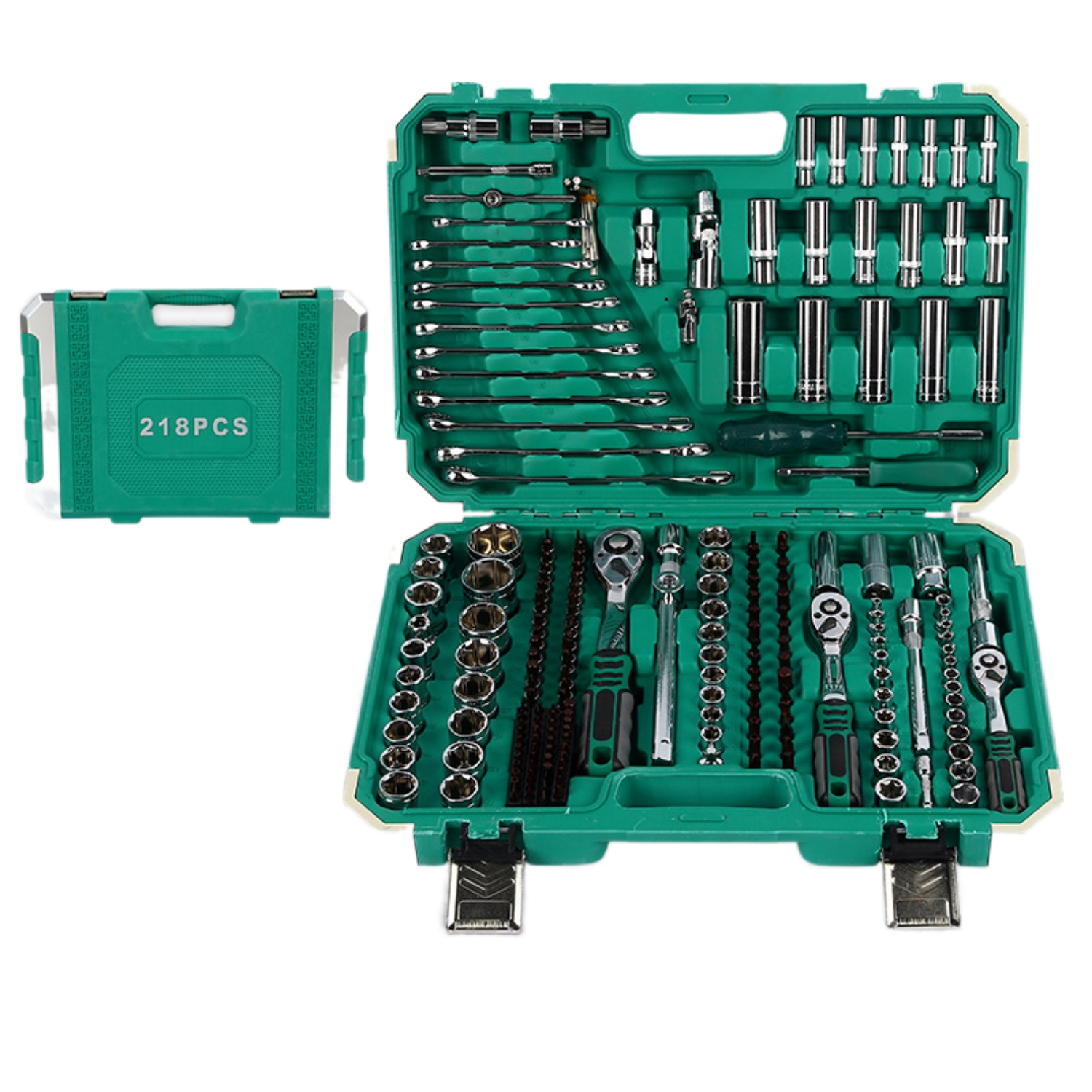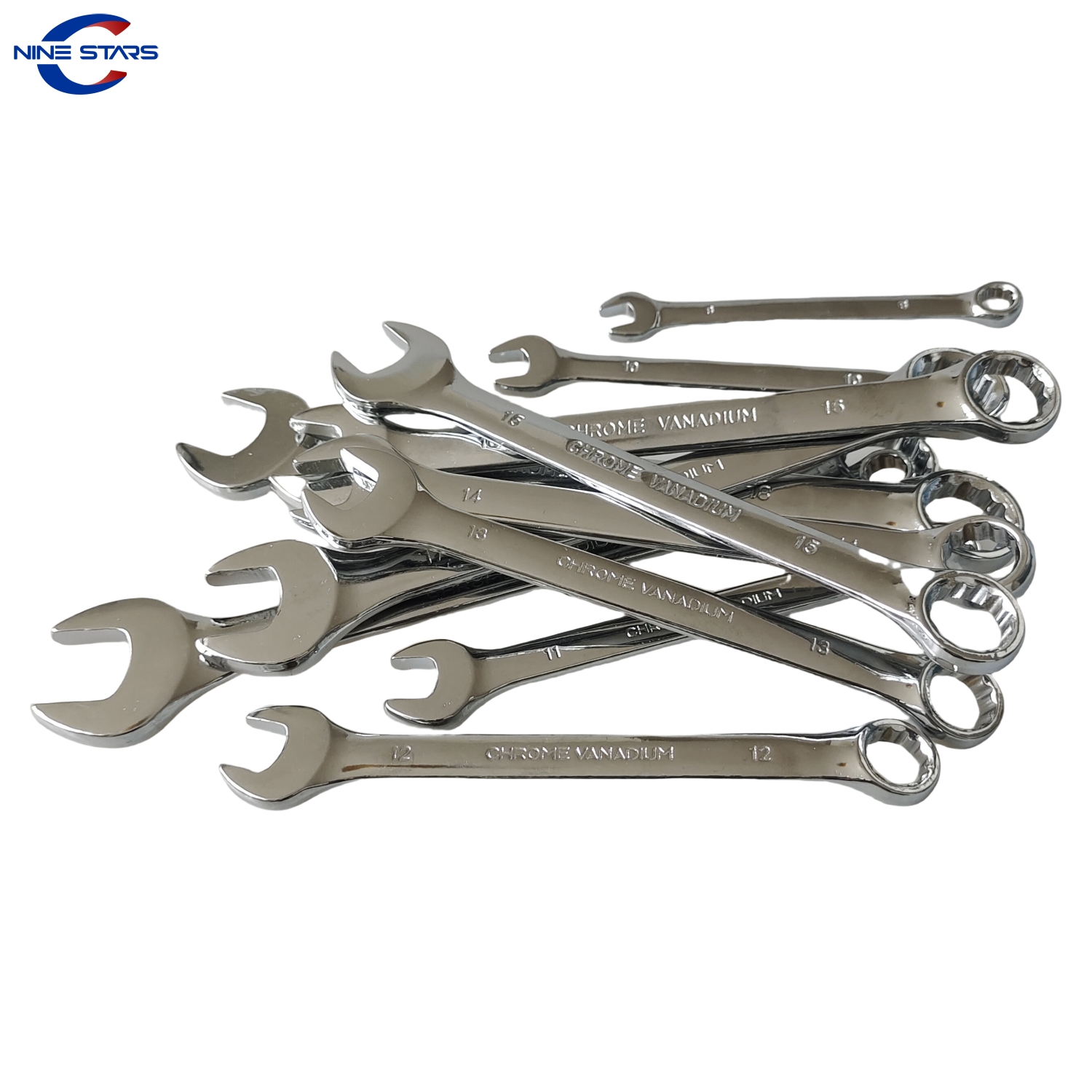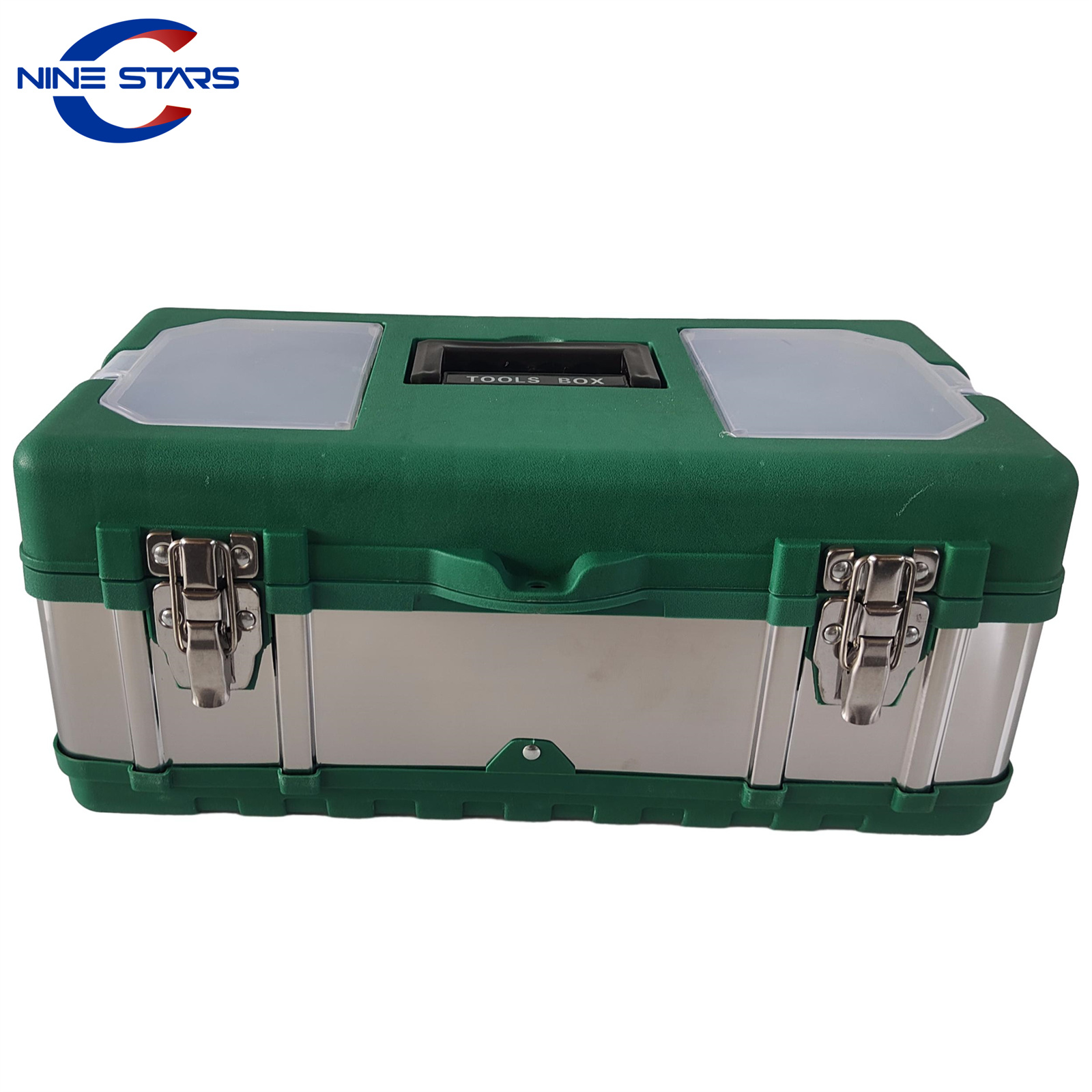Hi, I'm Allen. For over 20 years, my factory has been building the tool boxes, cabinets, and trolleys that professionals across the USA and Europe rely on. I've worked with countless procurement officers like Mark Thompson, who need to source quality tools for their businesses. I know what makes a good tool and which ones are absolutely non-negotiable. This article is your ultimate guide to building the perfect foundational toolbox. Whether you're a new homeowner, a DIY enthusiast, or stocking a workshop, understanding these essential tools will save you frustration, time, and money on any project you tackle.
Why is a Claw Hammer a Must-Have in Every Toolbox?
The hammer is the undisputed king of the toolbox. It’s one of the most ancient and fundamental hand tools, and its utility is timeless. For basic jobs around the house, from assembling flat-pack furniture to tapping joints into place, a hammer is indispensable. The most common and versatile type is the claw hammer. Its flat face is perfect for driving nails, while the V-shaped claw on the back provides excellent leverage for pulling them out. When you're hanging pictures, you'll reach for a hammer to hang pictures on the wall. It’s the first tool most people think of, and for good reason. No toolbox is complete without one.
When selecting a hammer, don’t just grab the cheapest one. Quality matters. A good hammer has a balanced feel, a comfortable, non-slip grip, and a head that's forged from high-quality steel and properly secured to the handle. A poorly made hammer can be a safety hazard—I've heard stories from clients about heads flying off mid-swing! While a claw hammer is your primary choice, you might also consider a rubber mallet for tasks that require a softer touch, like woodworking or assembling items you don't want to dent. Think of it as a tool for persuasion, not force. For tougher jobs requiring serious impact, you'll need a more heavy-duty model, but for everyday home maintenance, a 16-ounce claw hammer is the best tool for the job.
What Makes a Screwdriver Set So Essential for a Homeowner?
If the hammer is the king, the screwdriver is the prime minister. It does all the detailed work. Nearly everything in a modern home is held together by some type of screw. From tightening a loose cabinet handle to opening a battery compartment, a reliable screwdriver set is a non-negotiable part of your toolbox needs. The two most common types you'll encounter are the Phillips head (with a cross-shaped tip) and the flathead (a single slot). Having both is critical.
A great starting point is a multi-bit screwdriver, which comes with one handle and a variety of interchangeable tips. This saves space and ensures you have the right size for the task at hand. However, for more frequent use, a dedicated set of phillips head screwdrivers and flatheads in a variety of sizes offers better comfort and durability. In my factory, when we assemble tool kits for clients in Europe, we always include screwdrivers that meet VDE certification for electrical safety. This is a crucial feature if you plan on doing any work involving wiring, as an insulated handle can protect you from electric shock. It’s a detail that showcases the importance of choosing quality tools designed for safety.

Are Pliers the Most Versatile Hand Tools You Can Own?
Pliers are the unsung heroes of the toolbox. Their primary function is to grip, but their uses extend far beyond that. They can hold a nut steady while you tighten a bolt, bend or cut wire, and retrieve small objects from tight spaces. A good set of pliers will come in handy more often than you can imagine. They provide a level of grip and torque that your bare hands simply can't match, making them an invaluable tool for plumbing, electrical work, and general repairs.
There are several types of plier, each with a specific purpose. For a basic kit, you'll want at least three:
- Slip-Joint Pliers: These are your general-purpose pliers. The pivot point can be adjusted to change the jaw width, allowing you to grip objects of various sizes.
- Needle-Nose Pliers: With their long, slender jaws, these are perfect for precision work. They can reach into cramped areas, bend wire loops, and handle small components with ease.
- Locking Pliers (Vise-Grips): This is a truly amazing invaluable tool. You can clamp them onto an object and they will stay locked in place, freeing up your hands to do other work. They are fantastic for holding stubborn nuts and bolts or for clamping two pieces of material together while glue dries.
How Do You Choose the Right Wrench and Socket Set?
When a plier won't do, you need a wrench. Wrenches are designed specifically for tightening and loosening hexagonal nuts and bolts, providing a secure fit that prevents stripping the fastener. The most versatile wrench for a beginner is the adjustable wrench. It has a moveable jaw that can be adapted to fit various SAE (imperial) and metric sizes. Having one or two of these in different sizes allows you to handle a variety of tasks without needing a full set.
However, for serious mechanical or automotive work, an adjustable wrench can sometimes be clunky. That's where a dedicated socket set comes in. A socket set includes a ratchet handle and a collection of sockets in different sizes that snap onto it. The ratcheting mechanism allows you to tighten or loosen a bolt without removing and repositioning the wrench, which is a huge time-saver. A good set will include both shallow and deep sockets, a few extension bars, and both standard and metric sockets. When we work with automotive workshop clients, we always emphasize the importance of a comprehensive socket set—it's the heart of their operation. You might also consider a high-quality combination wrench set, which has a closed-end for grip and an open-end for speed.
Can You Really Get By Without a Good Tape Measure?
Absolutely not. Precision is the key to any successful DIY project, and you can't be precise without accurate measurements. A reliable tape measure is one of the most important essential tools you will own. Whether you're measuring for a new piece of furniture, checking if a picture is centered, or cutting a piece of wood, a tape measure ensures you do it right the first time. The old adage "measure twice, cut once" exists for a reason, and this tool is what makes it possible.
When choosing a tape measure, look for one that is at least 25 feet (or about 8 meters) long. This length should be long enough to reach across most rooms in a house. A crucial feature is a locking mechanism. A tape measure with a locking button allows you to extend the tape and have it stay in place, so you can make marks without it trying to retract. Also, check the standout—this is how far the tape can extend before it bends and collapses. A longer standout is incredibly helpful when you're working alone. Finally, make sure the end hook is sturdy and can grab onto edges securely to get a perfect right angle measurement.

What's the Difference Between a Utility Knife and a Saw?
While both tools are used for cutting, they serve very different purposes. A utility knife, often called a box cutter, is for precision cutting of thinner materials. It's perfect for opening boxes, sharpening pencils, scoring drywall, or carefully trimming carpet. The blades are replaceable and retractable for safety, making it a fixture in any tool bag. It's a tool of finesse.
A saw, on the other hand, is a tool of power. It's used for cutting through thicker, tougher materials like wood, plastic, or metal. For a basic hand tools kit, a simple handsaw (also called a panel saw) is a great start. It can handle most simple wood-cutting jobs. There are many types of saws designed for specific materials and types of cuts, but a general-purpose handsaw will allow you to accomplish a lot. When you're ready to tackle bigger projects, you'll likely move on to power saws.
When Should You Step Up to Power Tools like a Power Drill?
Hand tools form the foundation of your collection, but power tools are what make your projects faster, easier, and more professional. The moment you try to drive a dozen screws by hand, you'll understand why a power drill is a game-changer. They save an immense amount of time and physical effort, especially on larger projects. While it might seem like an advanced tool, a basic power drill is surprisingly user-friendly and is often the first power tool a homeowner buys.
The undisputed champion here is the cordless drill. Not being tethered to a cord gives you incredible freedom to work anywhere. A good power drill will come with a set of drill bits for making holes and driver bits for driving screws. Look for one with an adjustable clutch, which allows you to control the amount of torque to avoid stripping screws or damaging your material. Once you have a drill, you might consider other power tools. For anyone planning on doing woodworking or construction, a circular saw is the next logical step. It makes straight, fast cuts in wood and is essential for big projects. Just be sure you have a heavy-duty extension cord if you opt for a corded model.
What Other Hand Tools Complete Your Toolbox Needs?
Once you have the basics covered, a few other items will round out your kit and prepare you for a wider range of tasks. A bright LED flashlight is a must-have. You'll often find yourself working in poorly lit areas like under a sink or inside a closet, and having a dedicated, powerful light source is crucial. Another incredibly useful gadget is a stud finder. Before you hang anything heavy on a wall, you need to know where the wooden studs are for support. This simple device saves you from making a bunch of unnecessary holes in your drywall.
Next, a set of clamp tools is invaluable for holding pieces of wood together while glue sets or for securing an object to your workbench. A level is also essential to ensure everything you hang is perfectly horizontal (level) or vertical (plumb). No one wants a crooked picture frame! Don't forget an Allen wrench set (also called hex keys). These L-shaped tools are used for hexagonal screws and are commonly needed for furniture assembly. Finally, a can of lubricant like WD-40 can solve a thousand problems, from silencing squeaky hinges to loosening rusted parts. A bit of sandpaper in various grits is also great to have for smoothing rough edges.

Why is Safety Gear the Most Important Tool of All?
You can have the best tools you need in the world, but they are useless if you get injured. Safety gear is not an accessory; it is the most critical component of your toolbox. I've been in this industry a long time, and I always tell my clients that promoting safety is as important as selling tools. The most basic and non-negotiable item is a pair of safety glasses. They protect your eyes from flying debris, sawdust, and chemical splashes. An injury to your eyes can be life-altering, so there are no excuses for not wearing them.
Beyond glasses, a good pair of work gloves will protect your hands from cuts, scrapes, and blisters. For tasks involving loud power tools, hearing protection like earplugs or earmuffs is essential to prevent long-term hearing damage. If you're doing a lot of sanding or working with materials that create fine dust, a dust mask is a must to protect your lungs. In our factory, we adhere to strict international safety standards, and you should adopt a similar mindset for your own projects. Having the right tools in your toolbox includes the tools that protect you.
How Do You Organize All These Tools in Your Tool Box?
Now that you have all these fantastic tools, where do you put them? A messy, disorganized pile of tools is inefficient and can even be dangerous. Having a proper tool box is essential to protect your investment and help you find the right tools quickly. A good storage system keeps your tools safe from rust and damage and makes it easy to see what you have at a glance. It turns a random collection into a functional kit.
For a basic set of hand tools, a simple portable tool bag or a durable stainless steel tool box is a perfect start. As your collection grows, you might want to upgrade. We manufacture a wide range of storage solutions, and I often see customers who start with a small box eventually graduate to a mobile 5-drawer tool cabinet for their garage or workshop. The key is to have a system that works for the type of work you do. Keep sockets and wrenches together, screwdrivers organized by type, and so on. A well-organized toolbox makes you a more effective handyman. You won't be a box full of frustration when you can't find that one specific screwdriver. The goal isn't just to own the essential tools, but to be able to access them when inspiration for a project strikes. If you want to get started with a solid foundation, investing in a pre-made set like a comprehensive 151-piece tool kit can be a cost-effective way to get organized from day one.
Key Takeaways
Building a great toolbox is a journey, not a destination. As you tackle more projects, you'll learn which tools you use most and what you need to add to your collection. To get you started on the right foot, here are the most important things to remember:
- Start with the Essentials: Focus on acquiring the core hand tools first: a claw hammer, a screwdriver set, several types of pliers, an adjustable wrench, and a tape measure.
- Quality Over Quantity: It's better to have a few high-quality tools that will last a lifetime than a box full of cheap ones that will break or fail when you need them most.
- Safety is Not Optional: Always have and use the proper safety gear. Safety glasses, gloves, and hearing protection are just as important as your hammer or drill.
- Organization is Key: A good tool box or cabinet protects your tools and saves you time. An organized workspace leads to better, more efficient work.
- Expand as You Grow: Don't feel you need to buy everything at once. Start with the basics and add more specialized tools, including power tools, as your skills and project ambitions grow.
Post time: 09-04-2025



